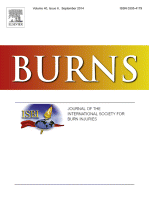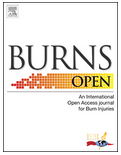Gus, E; Shahrokhi, S; Jeschke, M.
Burns, 2020-02-01, Volumen 46, Número 1, Páginas 19-32
 Major thermal injury induces profound metabolic derangements secondary to an inflammatory “stress-induced” hormonal environment. Several pharmacological interventions have been tested in an effort to halt the hypermetabolic response to severe burns. Insulin, insulin growth factor 1, insulin growth factor binding protein 3, metformin, human growth hormone, thyroid hormones, testosterone, oxandrolone, and propranolol, among others, have been proposed to have anabolic or anticatabolic effects.
Major thermal injury induces profound metabolic derangements secondary to an inflammatory “stress-induced” hormonal environment. Several pharmacological interventions have been tested in an effort to halt the hypermetabolic response to severe burns. Insulin, insulin growth factor 1, insulin growth factor binding protein 3, metformin, human growth hormone, thyroid hormones, testosterone, oxandrolone, and propranolol, among others, have been proposed to have anabolic or anticatabolic effects.
 Burns of anterior shoulder joint surface and neighboring areas produce shoulder edge adduction contracture and scar deformity, slowing down the development of upper limbs in pediatric patients. Therefore, surgical reconstruction is indicated as early as the contracture is formed. Currently used surgical techniques, based on counter transposition of the local triangular flaps and skin transplants, do not solve the problem because of incomplete release of the contractures. Repeated operations are often performed. The scar deformity also remains.
Burns of anterior shoulder joint surface and neighboring areas produce shoulder edge adduction contracture and scar deformity, slowing down the development of upper limbs in pediatric patients. Therefore, surgical reconstruction is indicated as early as the contracture is formed. Currently used surgical techniques, based on counter transposition of the local triangular flaps and skin transplants, do not solve the problem because of incomplete release of the contractures. Repeated operations are often performed. The scar deformity also remains.




 Sitio web publicado el
Sitio web publicado el
Los lectores comentan